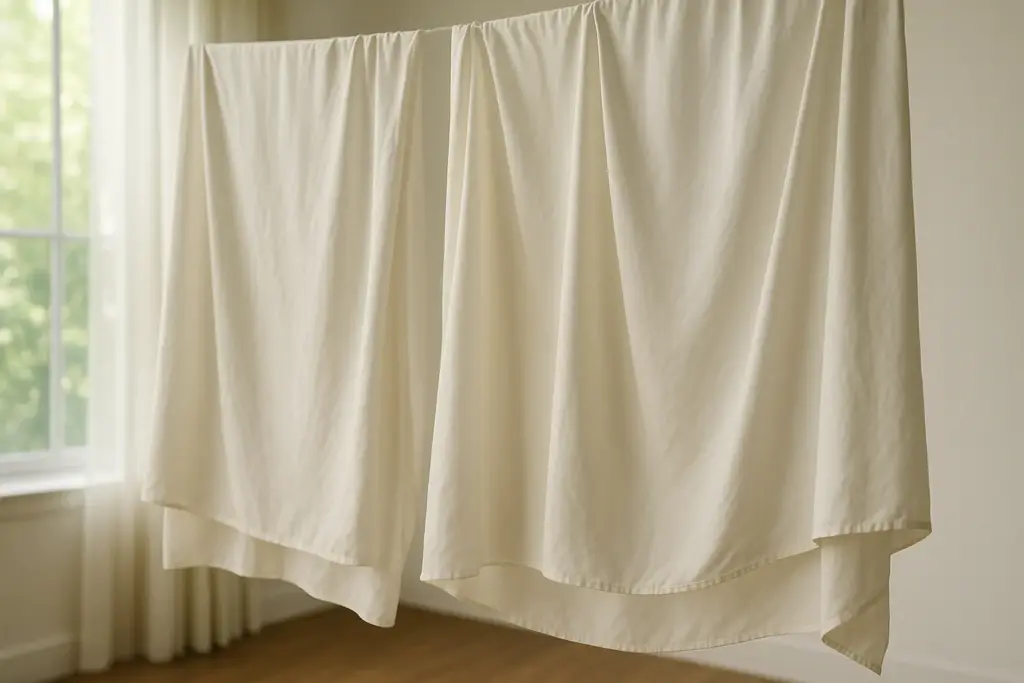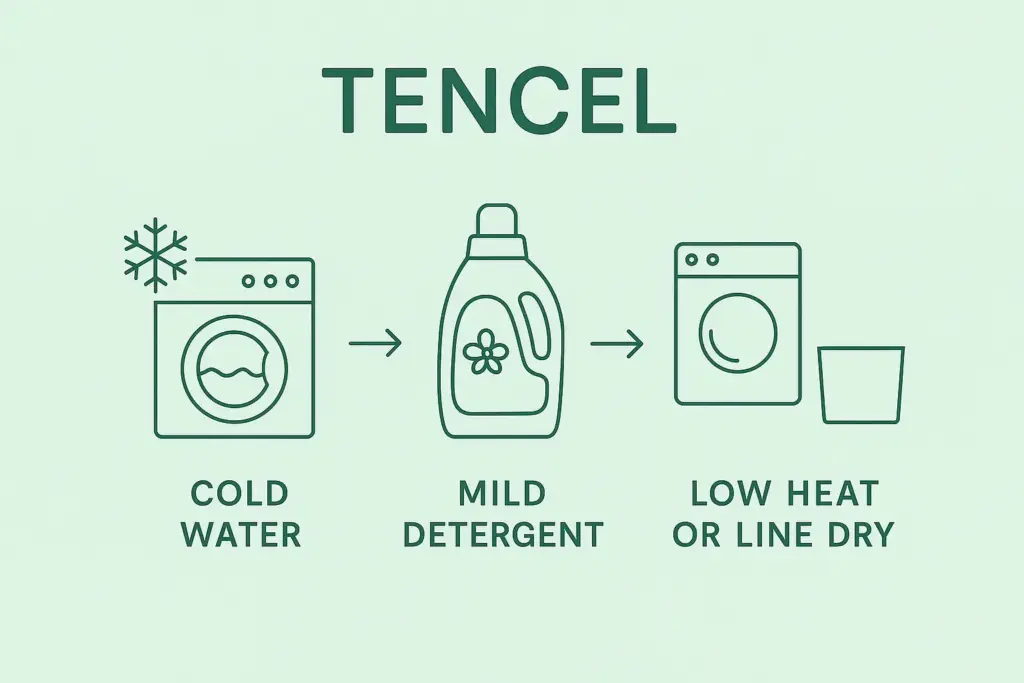TENCEL™ is known for its softness, breathability, and eco-friendliness. However, improper washing can damage its silky fibers and shorten its lifespan. This guide explains how to wash, dry, and maintain TENCEL™ sheets while preserving their luxurious feel.
Why Proper Washing Matters
TENCEL™ fibers (commonly made from lyocell) are derived from sustainably sourced wood pulp. While they’re naturally strong, their structure is more delicate than cotton or polyester. High heat, harsh detergents, or improper handling can cause:
- Fiber weakening
- Pilling
- Loss of sheen or softness
- Shrinkage
Proper care helps maintain both durability and comfort.

Step-by-Step: How to Wash TENCEL™ Sheets
1. Use Cold Water Only
Always wash your TENCEL™ sheets in cold or lukewarm water (below 30°C / 86°F). Hot water can break down the fibers over time.
2. Choose a Gentle Cycle
Set your machine to a delicate or gentle cycle with minimal agitation. This prevents fiber stretching and friction.
3. Use Mild, Eco-Friendly Detergent
Avoid bleach, fabric softeners, or harsh chemicals. Instead, opt for:
- Plant-based liquid detergent
- pH-neutral detergent
- Fragrance-free detergent
Powdered detergents can leave residue and should be avoided.

Drying Instructions
1. Avoid High Heat
Tumble drying on low heat is acceptable, but air drying is preferred. TENCEL™ dries faster than cotton, making line-drying practical and eco-conscious.
2. No Direct Sunlight
Dry indoors or in shaded areas to prevent discoloration or breakdown of fibers caused by UV rays.
Ironing & Storage Tips
- If needed, iron on low heat while the fabric is still slightly damp.
- Avoid steam, which may cause water spots.
- Store in a cool, dry, and breathable cotton bag — not in plastic.
relation product:Tencel Lyocell Eucalyptus 6 Piece Bed Sheet Sets Duvet Cover Pillow Case
Bonus Tip: Wash Before First Use
Washing your new TENCEL™ sheets before first use helps:
- Remove production residues
- Enhance softness
- Reduce static and shrinkage
Final Thoughts
TENCEL™ sheets are an investment in comfort and sustainability. With the right washing and drying methods, they’ll stay soft, smooth, and vibrant for years. Whether you’re a hotel, retailer, or household, proper care ensures a premium sleep experience for every user.


Leave a Reply